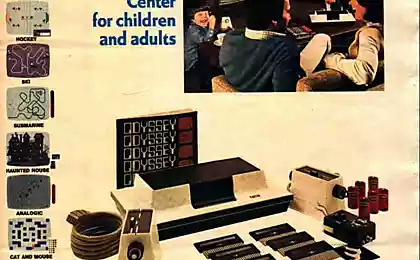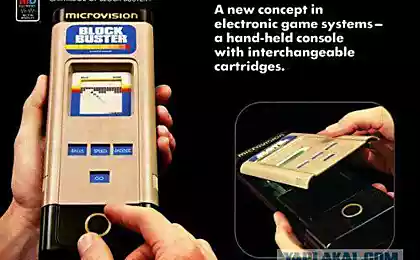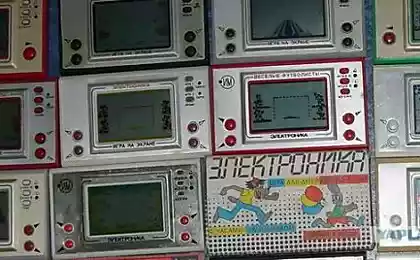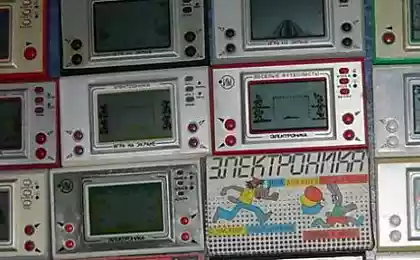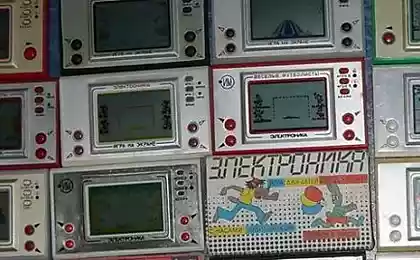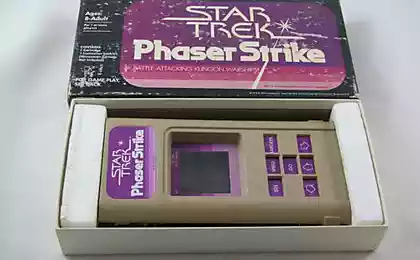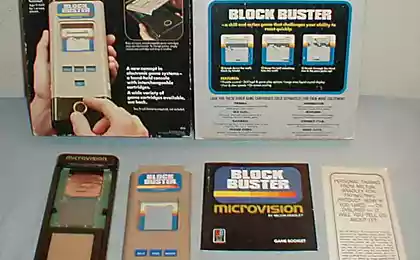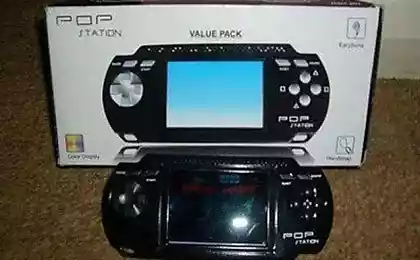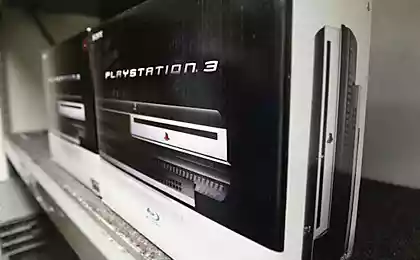972
10 most unsuccessful consoles in history
After the appearance of the first console video game - Magnavox Odyssey in 1972 - a lot of companies have tried their hand at an attractive and lucrative gaming platforms. Each new product appeared, accompanied by promises of exclusivity and innovative gaming experience, but many did not bring but disappointment. On blockbusters like NES, Atari 2600 or the Sony PlayStation had a lot of miserable craft, which pop up first was terribly far. Reasons enough: too overpriced, low productivity, nondescript assortment of games, and some products have combined all the items at once. 10 worst video game systems on the version of the publication PCWorld.
Apple Pippin (1996)
Apple Computer developed the Pippin as "multimedia station" and has licensed it for the production of third-party companies (Bandai and Katz Media). Unfortunately, the platform has not gained many inherent "apple" products are popular: being a game console, a computer to surf the net and multimedia player, all this "cocktail" functioned as a cheap lurid mechanism. Hardware-based PowerPC processor included 66 MHz, CD-ROM drive with a four-speed modem 14, 4 kbit / s. Software is a modified Mac OS. Console cost is very expensive at the time - $ 600. Electronic resource Macworld.com awarded the title of the device one of the six worst Apple products of all time.
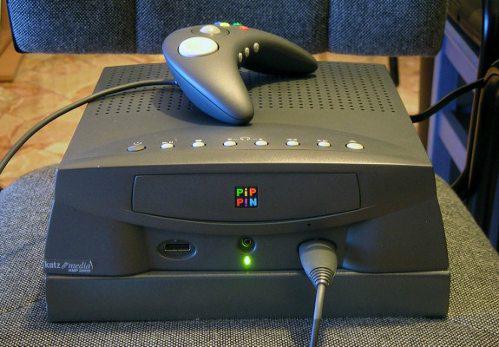
Tiger Game.com (1997)
At the end of the 1990s the company Tiger well established as a manufacturer of portable electronic game systems. Each toy store has had its range of cheap Tiger console with LCD screen, and it was assumed that the company should release a worthy competitor to Game Boy from Nintendo, which had a huge demand. Mission entrusted Game.com - the first device with a touch screen and Internet connection. Implementation of the latter possibility was disgusting: to connect to the network needed a cartridge simulating a terminal program only supports text mode, and serial cable for connection to an external dial-up modem - in other words, the technology of the 1980s. Not too mobile. Among the other "advantages": does not inspire admiration library of games, low resolution screen with a blurred image, "twitching" animation. But present Solitaire.

Nokia N-Gage (2003)
With the advent of the 21st century on the market of multifunctional devices out new models, which are wedged into the ranks of the product of the Finnish company. N-Gage combined in a single package the mobile phone and gaming consoles, but the talent of engineers Nokia, apparently, was not enough - both as the device has executed far from imperfect. Later, the hardware has been modified to correct the admitted mistakes in the original model. Disadvantages include: the need to remove the back cover and the battery to change games; poor game library; the side of the microphone body, which was very uncomfortable with the conversation; neergonomichny design buttons. On the other hand, it presents the opportunity to connect to the Internet and the multiplayer mode of the game.
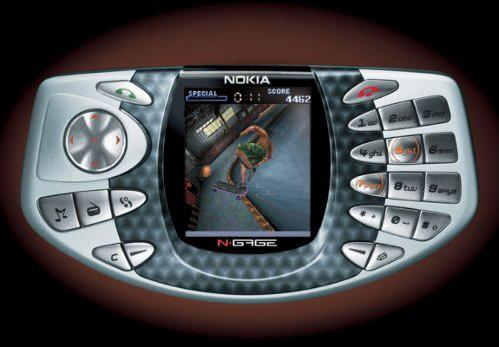
Mattel Hyperscan (2006)
Hyperscan represented marketers dream - a product capabilities combined game console and game cards collectibles. For each game on CD Mattel produced a set of paper cards, each of which was equipped with a RFID-chip. During the game, the user can "scan" card to add new features and capabilities in the game. Theoretically, the company could produce supplements in this form for a long time, extending the life of games. But not developed. Rickety design, terrible game, unreliable reader RFID, a very long download games - all this has led to the fact that the cost of the console, which stood originally $ 69, 99, fell at the end of the short life of the product up to $ 9, 99, and games - to $ 19, 99 to $ 1, 99.

Gakken TV Boy (1983)
Back in 1983, Japan experienced a flourishing market of home video game systems, and among them was the eccentric Gakken TV Boy. Her short-lived fame eclipsed Nintendo NES, which appeared in the same year and won a stunning success, just an estimate of all competitors. A Gakken TV Boy remembered how clumsy console with T-joystick, also built into the main structure. Similar to a telephone handle on the left did not have the technical functionality and serves to keep the console during the game. Excellent sample design tastelessness and absurdities.
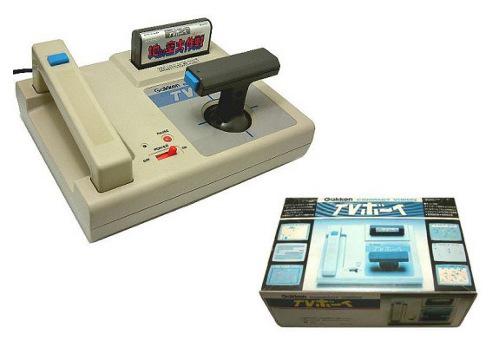
RDI Halcyon (1985)
Prefix had limited production volumes and cost $ 2500 (which at present corresponds to approximately $ 4,950). Halcyon by RDI Video Systems has been designed without a clear plan of market positioning and generally designed to run video games from a CD-ROM drive, but also had a primitive system of speech recognition and synthesis. The company compares it with the machine HAL from the movie "2001: A Space Odyssey," but the resemblance was very doubtful. The hardware part of the Z80 and included 64 Kb of memory shared between ROM and RAM. Total sales of consoles came just two games.
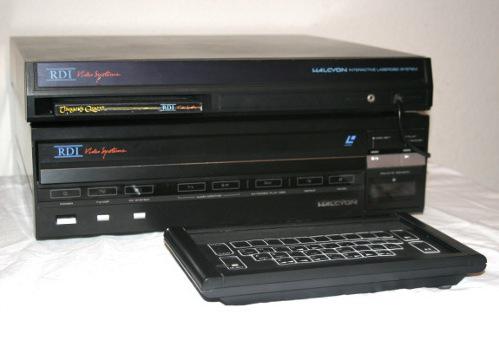
Philips CD-i (1991)
The idea was interesting: the gaming machine based on the CD-ROM, which could replace the audio and video recorder with features karaoke. Especially for Philips has developed new standards for storage of content on CDs and licensed platform for third-party manufacturers. As a result, in the early 1990s, many companies have released their own CD-i-player. Technical specifications include 16-bit chip with 15, 5 MHz, 16-bit stereo, the operating system CD-RTOS, 1 MB RAM, single-speed gear drives. Software library for the platform was very scarce, as well as video quality. The controller also left much to be desired. The cost is about $ 1,000.

Tandy / Memorex VIS (1992)
In a wave of heated platform CD-i enthusiasm for multimedia systems, has decided to join the company Tandy, firing console Video Information System (VIS) under the brand Memorex - unfortunate resemblance already existed, and so not the most impressive CD-i-devices. Especially for the product has been developed a special version of the operating system Microsoft Windows 3.1 - Modular Windows, do not use anywhere else. The device is based on the Intel 286 (12 MHz), video Cirrus Logic, audio system Yamaha, had a 1 MB non-volatile memory and 1 MB - RAM. Also present PS / 2 connector. Software and Games for VIS hardly produced.
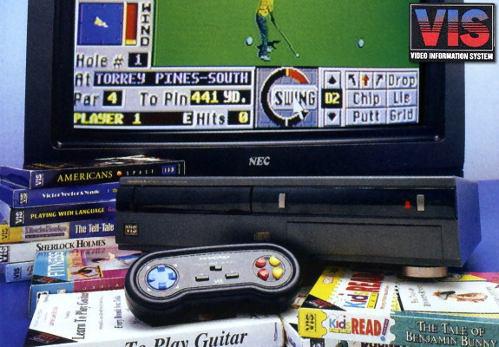
Tiger Telematics Gizmondo (2005)
If ever gaming consoles on the market is a disaster, the Gizmondo - its direct implementation. Despite the "stuffing" a Samsung ARM9 400 MB, 2, 8-inch screen, 128-bit graphics accelerator NVIDIA GeForce 3D 4500, 64 MB of memory, support for Bluetooth, GSM, GPRS and even GPS, the company Tiger Telematics tarnished its reputation by criminal scandals, and games for the platform there was only 8. However, an unsuccessful marketing strategy this led to the fact that sales were only 25 thousand. units.
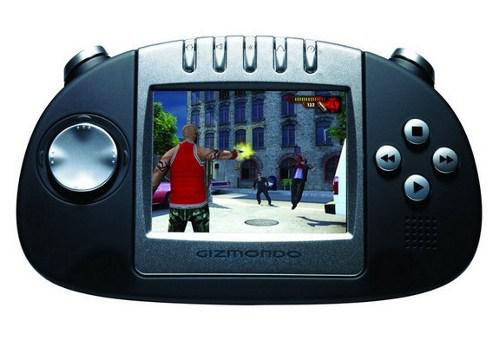
RCA Studio II (1977)
This is the second in the history of the console with interchangeable cartridges. Unfortunately for RCA, the first and third of the series consoles - Fairchild Channel F and Atari VCS - functioned much better. Both devices support color graphics and wired remote controllers, thus having clear advantages over Studio II. And the name of the country - the company never produced Studio I. The result: no controller, two built-in digital panel, black-and-white graphics, audio from the built-in speakers, powered via a special cable, a mediocre game. No comments.
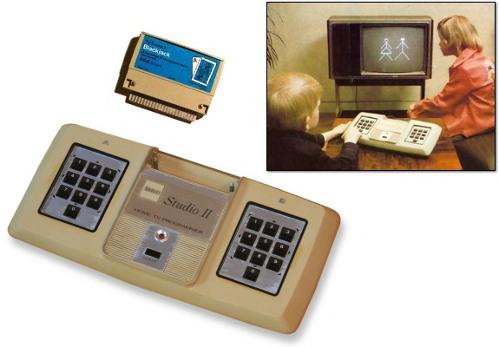
Source:
Apple Pippin (1996)
Apple Computer developed the Pippin as "multimedia station" and has licensed it for the production of third-party companies (Bandai and Katz Media). Unfortunately, the platform has not gained many inherent "apple" products are popular: being a game console, a computer to surf the net and multimedia player, all this "cocktail" functioned as a cheap lurid mechanism. Hardware-based PowerPC processor included 66 MHz, CD-ROM drive with a four-speed modem 14, 4 kbit / s. Software is a modified Mac OS. Console cost is very expensive at the time - $ 600. Electronic resource Macworld.com awarded the title of the device one of the six worst Apple products of all time.

Tiger Game.com (1997)
At the end of the 1990s the company Tiger well established as a manufacturer of portable electronic game systems. Each toy store has had its range of cheap Tiger console with LCD screen, and it was assumed that the company should release a worthy competitor to Game Boy from Nintendo, which had a huge demand. Mission entrusted Game.com - the first device with a touch screen and Internet connection. Implementation of the latter possibility was disgusting: to connect to the network needed a cartridge simulating a terminal program only supports text mode, and serial cable for connection to an external dial-up modem - in other words, the technology of the 1980s. Not too mobile. Among the other "advantages": does not inspire admiration library of games, low resolution screen with a blurred image, "twitching" animation. But present Solitaire.

Nokia N-Gage (2003)
With the advent of the 21st century on the market of multifunctional devices out new models, which are wedged into the ranks of the product of the Finnish company. N-Gage combined in a single package the mobile phone and gaming consoles, but the talent of engineers Nokia, apparently, was not enough - both as the device has executed far from imperfect. Later, the hardware has been modified to correct the admitted mistakes in the original model. Disadvantages include: the need to remove the back cover and the battery to change games; poor game library; the side of the microphone body, which was very uncomfortable with the conversation; neergonomichny design buttons. On the other hand, it presents the opportunity to connect to the Internet and the multiplayer mode of the game.

Mattel Hyperscan (2006)
Hyperscan represented marketers dream - a product capabilities combined game console and game cards collectibles. For each game on CD Mattel produced a set of paper cards, each of which was equipped with a RFID-chip. During the game, the user can "scan" card to add new features and capabilities in the game. Theoretically, the company could produce supplements in this form for a long time, extending the life of games. But not developed. Rickety design, terrible game, unreliable reader RFID, a very long download games - all this has led to the fact that the cost of the console, which stood originally $ 69, 99, fell at the end of the short life of the product up to $ 9, 99, and games - to $ 19, 99 to $ 1, 99.

Gakken TV Boy (1983)
Back in 1983, Japan experienced a flourishing market of home video game systems, and among them was the eccentric Gakken TV Boy. Her short-lived fame eclipsed Nintendo NES, which appeared in the same year and won a stunning success, just an estimate of all competitors. A Gakken TV Boy remembered how clumsy console with T-joystick, also built into the main structure. Similar to a telephone handle on the left did not have the technical functionality and serves to keep the console during the game. Excellent sample design tastelessness and absurdities.

RDI Halcyon (1985)
Prefix had limited production volumes and cost $ 2500 (which at present corresponds to approximately $ 4,950). Halcyon by RDI Video Systems has been designed without a clear plan of market positioning and generally designed to run video games from a CD-ROM drive, but also had a primitive system of speech recognition and synthesis. The company compares it with the machine HAL from the movie "2001: A Space Odyssey," but the resemblance was very doubtful. The hardware part of the Z80 and included 64 Kb of memory shared between ROM and RAM. Total sales of consoles came just two games.

Philips CD-i (1991)
The idea was interesting: the gaming machine based on the CD-ROM, which could replace the audio and video recorder with features karaoke. Especially for Philips has developed new standards for storage of content on CDs and licensed platform for third-party manufacturers. As a result, in the early 1990s, many companies have released their own CD-i-player. Technical specifications include 16-bit chip with 15, 5 MHz, 16-bit stereo, the operating system CD-RTOS, 1 MB RAM, single-speed gear drives. Software library for the platform was very scarce, as well as video quality. The controller also left much to be desired. The cost is about $ 1,000.

Tandy / Memorex VIS (1992)
In a wave of heated platform CD-i enthusiasm for multimedia systems, has decided to join the company Tandy, firing console Video Information System (VIS) under the brand Memorex - unfortunate resemblance already existed, and so not the most impressive CD-i-devices. Especially for the product has been developed a special version of the operating system Microsoft Windows 3.1 - Modular Windows, do not use anywhere else. The device is based on the Intel 286 (12 MHz), video Cirrus Logic, audio system Yamaha, had a 1 MB non-volatile memory and 1 MB - RAM. Also present PS / 2 connector. Software and Games for VIS hardly produced.

Tiger Telematics Gizmondo (2005)
If ever gaming consoles on the market is a disaster, the Gizmondo - its direct implementation. Despite the "stuffing" a Samsung ARM9 400 MB, 2, 8-inch screen, 128-bit graphics accelerator NVIDIA GeForce 3D 4500, 64 MB of memory, support for Bluetooth, GSM, GPRS and even GPS, the company Tiger Telematics tarnished its reputation by criminal scandals, and games for the platform there was only 8. However, an unsuccessful marketing strategy this led to the fact that sales were only 25 thousand. units.

RCA Studio II (1977)
This is the second in the history of the console with interchangeable cartridges. Unfortunately for RCA, the first and third of the series consoles - Fairchild Channel F and Atari VCS - functioned much better. Both devices support color graphics and wired remote controllers, thus having clear advantages over Studio II. And the name of the country - the company never produced Studio I. The result: no controller, two built-in digital panel, black-and-white graphics, audio from the built-in speakers, powered via a special cable, a mediocre game. No comments.

Source:

